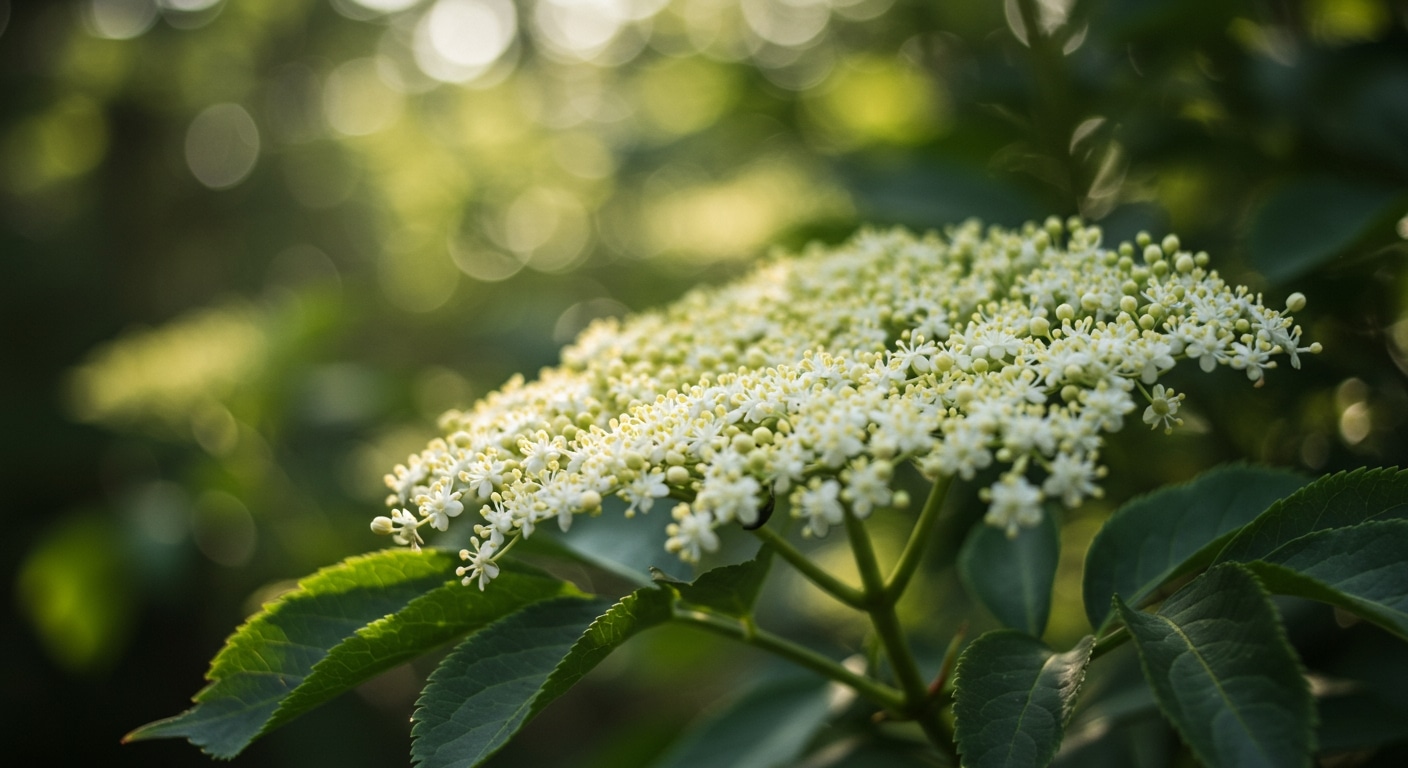
An Overview
Elderberry Flowers & Growing: Identification, Bloom Time & Care
Elderberries (genus Sambucus) reward you twice—first with fragrant spring elderflowers, then with late-season fruit. Consistent success comes down to three things: accurate identification, bloom timing, and sound growing practices. This guide gives you the essentials and points to deeper dives where they belong.
Identification: get the plant right
Elderberry is often confused with other umbel-bearing shrubs. Confirm opposite branching, pithy stems, and flat, many-flowered corymbs; leaves are compound with 5–9 serrated leaflets. A few minutes with photos and a traits checklist prevents foraging mistakes and guides pruning later.
Start with the elderberry identification traits overview, then skim the what an elderberry bush looks like primer. For visuals, use the Sambucus canadensis picture guide and dedicated elderberry leaf images gallery. If you grow North American types, see American elderberry flower identification and uses.
Why elderflower matters
Those creamy clusters cue your garden schedule, support pollinators, and—when correctly sourced—serve in culinary and traditional herbal preparations. Understanding their value helps you decide when to prune and what to harvest.
Read why elderberry flowers matter for the full context.
Bloom timing by climate
Expect bloom from late spring through early summer, shifting with latitude, elevation, soil moisture, and cultivar. Strong bloom follows vigorous cane growth from the previous season; drought or poorly timed hard pruning can delay or reduce it.
Plan with when and where elderberries flower, then enjoy display ideas in elderberry bush in bloom and improve results with tips to boost elderberry bloom.
Pollination & fruit set
Many cultivars are partially self-fertile, but cross-pollination nearly always improves set and yield. Plant two compatible selections within bee-flight distance and avoid insecticides during bloom.
Details: elderberry pollination (do elderberries need a pollinator?).
Growing fundamentals that drive bloom
Give elderberry full sun (6+ hours), steady moisture, and organic-rich, well-drained soil (~pH 5.5–6.5). Mulch to conserve water, feed modestly, and practice renewal pruning to keep productive canes cycling. These basics do more for flowers than any single “hack.”
Start with the comprehensive growing and care guide. For additional angles, see the ultimate guide to growing elderberry shrubs, elderberry “tree” growing tips and care, best tips for maintaining elderberry “trees”, and elderberry bush vs. tree identification and care.
Spacing, hedges & garden layout
Good spacing improves airflow, keeps disease pressure down, and makes harvest sane. Decide early whether you want a hedge or individual shrubs, then space for mature width, not nursery pot size.
Answer the core question with how far apart to plant elderberry bushes, refine layouts using optimizing elderberry plant spacing, and explore elderberry hedge benefits for privacy, wildlife, and yield use-cases.
Size & height expectations
Unchecked, many elderberries reach 8–12 ft (2.4–3.6 m) with a multi-stem habit and some suckering. With annual renewal pruning you can keep plants 6–8 ft for easier harvest without sacrificing bloom.
Plan with how big an elderberry bush gets, design using size, planting, and growth guide, and manage canopy via elderberry plant height expectations.
Seasonal care, ornamentals & propagation
Winter is when you shape the coming year’s canopy; it’s also the time to assess dieback and clear congestion. Ornamental cultivars (e.g., dark-leaf selections) follow the same care with a design-first twist. Propagation from softwood or hardwood cuttings is straightforward if you mind timing and humidity.
See elderberry winter care, ornamental elderberry planting and care, and best practices for growing elderberry from cuttings.
Troubleshooting & sourcing safety
Leaf curl usually traces to drought stress, pests, herbicide drift, or viral issues; diagnose before treating and avoid blanket sprays during bloom. For culinary or herbal use, don’t buy florist elderflowers—they’re not produced for ingestion.
Fix issues with how to fix elderberry leaves curling and review why you shouldn’t rely on florist elderflowers for herbal use.
Quick FAQ
When do elderberries flower? Late spring into early summer, shifting with climate and cultivar—see when and where elderberries flower.
Do I need more than one plant? Cross-pollination typically boosts fruit set even if a cultivar is partly self-fertile—details in elderberry pollination.
How far apart should I plant? Space for mature width; start with how far apart to plant elderberry and adjust for hedge vs. individual shrubs.
What’s the easiest way to multiply plants? Use timed softwood or hardwood cuttings—follow elderberry cuttings best practices.
Masterful Display
Each and everyone of our products are deeply considered, labored over, and improved upon time and time again. We invite you to experience the difference of our carefully crafted small batches of herbal support items. Whether it be our tea line, produced for a delightful experience, or our tincture blends and extracts, we have what you need.

